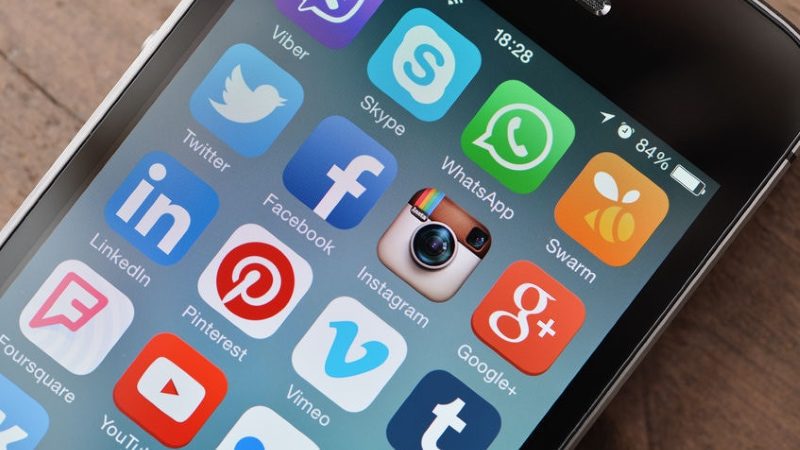There’s dozens of social platforms available online, from the ubiquitous to the obscure. You can’t be on all of them, but you can be on some. Which ones should you choose?
At Weaving Influence, we primarily focus on five channels: Facebook, Twitter, LinkedIn, Instagram, and Pinterest. These five have shown the greatest return on the smallest time investment, and are where the majority of authors and thought leaders prefer to hang out.
However, if you’re just getting started building a social media presence, even five channels may be too much. You certainly need to have a regular presence somewhere — but your followers will generally go wherever you are. So we recommend picking two platforms to start with, and committing to showing up there with consistency and quality, before adding any others.
Facebook is the place to build community by emphasizing engagement and driving conversation. Posting daily is optimum. Try to keep your posts under 90 characters, and whenever possible, avoid text-only posts and hashtags. However, feel free to use plenty of emojis! What should you share?
- High quality images and videos with quotes, relevant data, endorsements, personal updates, or on-topic humor. Get creative, but be sure you have permission to share everything before posting.
- Articles that will resonate with your audience. Embed the links so they pop up with the featured image. Share your own articles about once a week, and share other curated content a few times per week.
- Consider forming a private group to build a stronger, more interactive community (more on that in a later post!), or do a Facebook Live event to give a more personal, behind-the-scenes glimpse for your followers.
Twitter is a great place to build online thought leadership and reach a wide audience of potential audiences. We recommend posting 3-7 times per day, with a greater emphasis on early morning or late evening times. Be sure to use hashtags (up to 3 per tweet), personal tags, or emojis whenever possible. Here’s what you should share:
- Images, videos, and links perform best. Share a balanced mix of original content, relevant retweets, and curated links. Repeating content does well on Twitter, so re-post your highest performing content several days later, one week later, and one month later.
- Create Twitter lists of accounts most relevant to your expertise. These might be other thought leaders, authors, publishers, marketing firms, or individuals who share regularly about the same topics as you. Use these lists as a basis for finding content to retweet to your own followers.
- Pin a “Twitter card” to your account to highlight a product or service, share a link to your site, or simply bring awareness to an initiative. These stay at the top of your feed, and are the first thing followers see when they navigate to your page.
LinkedIn is the place to build your professional reputation. We recommend posting once per day, during business hours, for greatest engagement. Include embedded links or multimedia when possible, and feel free to write lengthier posts. Use a hashtag or two if you desire, but avoid emojis. Here’s what to share:
- Inspirational images and quotes, photos or videos, or strategic curated content works best here. Share promotional content less frequently. Also, be sure to keep content distinct from what you share on Facebook.
- Lengthier, in-depth articles (similar to blog posts), with helpful information at the end such as a brief author bio, relevant links, or other calls to action. We also recommend tweeting @LinkedInPulse with the link after you share an article here, to encourage inclusion in a Pulse feed.
Instagram is the place to bring your brand to life in a visual way. We recommend posting only when you have beautiful, clear, vibrant multimedia content. The focus is on quality, not frequency! Hashtags are also important: research the most popular ones for your field, and include 3-11 relevant tags in each post (or afterwards in a comment). Share the following:
- High-quality photos, graphics, gifs, or videos (nothing grainy or blurry!) that represent your brand and engages your community.
- Re-gram relevant content from other accounts to increase reach and engagement; but always be sure to get permission from the original poster, and tag them in your re-post.
- Add helpful links to your bio, such as your website or product page, and share occasional posts that direct fans to these links.
- Consider sharing Instagram stories to offer more behind-the-scenes glimpses or personal notes. They are only available for 24 hours, so they’re great for displaying limited time offers or in-the-moment events.
Pinterest is another visual-only platform that acts like a bulletin board or file cabinet of helpful tips. We recommend creating multiple boards and sharing your own new blog content and other helpful articles related to your fields. Always include a meaningful description, the author’s name, and a short url to the original site on each pin — and avoid hashtags. Here’s what to pin:
- Content with strong graphics. Share a mixture of blog pins with share graphics, and share more than just your own content.
- Spend a few minutes each week searching Pinterest for helpful content to pin to your own boards.
- Consider creating a group board for a particular topic, and inviting others in your community to share.
Bonus Tip
Make consistent progress in building your network each week by using the 12-minute per day approach! Choose one platform per day, set aside 12 focused minutes, and make serious strides in increasing awareness of your brand and strengthening your influence online.
Which social channels do you show up on consistently?

Elizabeth Johnson loves the color yellow, strong {black} coffee, editing, and exploring the mountains in rural Wyoming and Utah, where she and her husband serve as church planters. In her free time, she enjoys learning new things, hand-lettering and acrylic painting, and gaming with her husband.

